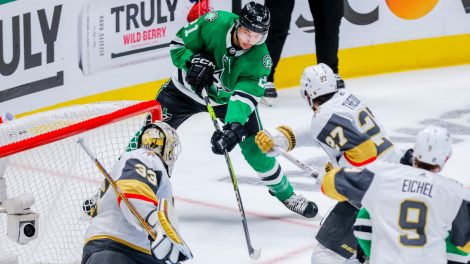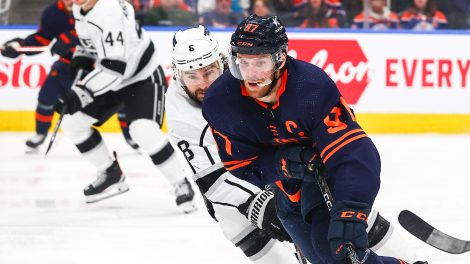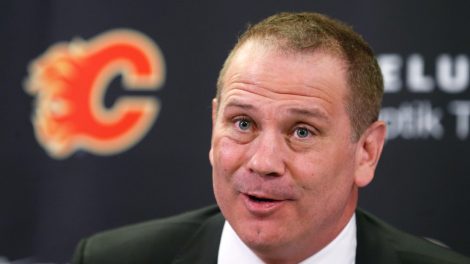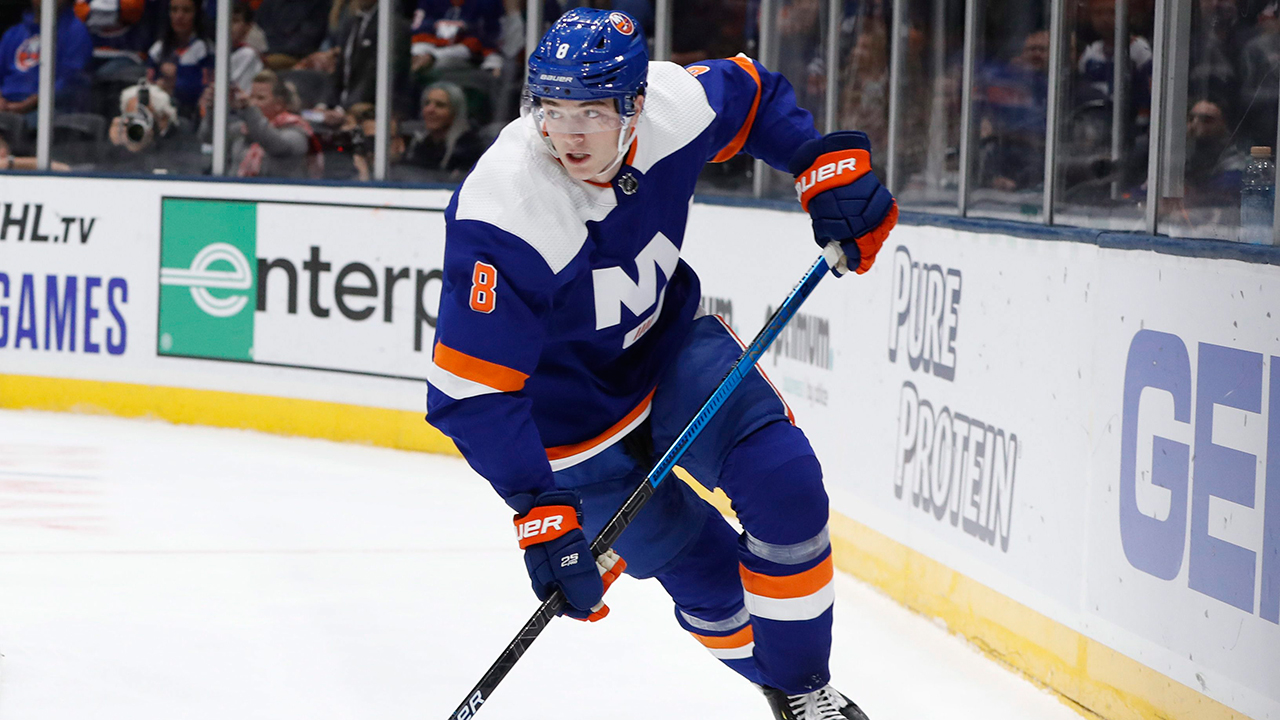A red herring? Perhaps.
Maybe U.S. phenom Auston Matthews is seriously considering playing his draft year in the Swiss Elite League, or maybe he’s not, at least not really. We know teams have contacted him, we know reports suggesting he’s already signed are not true, and we know his family advisors (otherwise known as player agents) say the Swiss option is “viable.”
But a potential No. 1 pick from North America playing in Switzerland rather than the Canadian Hockey League or the NCAA? Seems far-fetched, yes?
STANLEY CUP PLAYOFFS: | Broadcast Schedule
Rogers NHL GameCentre LIVE | Stanley Cup Playoffs Fantasy Hockey
New Sportsnet app: iTunes | Google Play
Well, we should know the answer to that question this week or by next week at the latest. Matthews, 17, has promised a decision soon on where he’ll play next year, and while it’s not quite getting the same headlines as Mike Babcock’s big choice, it will definitely add a new layer to the ongoing tussle for control of hockey talent between the CHL and U.S. colleges, and possibly open a new chapter with this Swiss option.
Whether Matthews is another “generational” talent is yet to be clear, but it sure looks that way. The U.S. team at the World Championships used him for an exhibition game against Austria, and word is the Americans wanted him to stay for the actual tournament, but he had to get back because he’d fallen too far behind on his Grade 11 studies in Ann Arbour, where he’s been going to school and participating in the U.S. National Team Development Program.
Born and raised in Scottsdale, Arizona, Matthews is going to be a trend-setting prospect simply because of his background. But if he were to eschew a year in Everett, Washington with the major junior Silvertips or a one-year tour with a major school like Michigan or the University of Denver in favour of turning pro with a team in Switzerland, that could make him a game-changer off the ice as well as on.
Why go to Switzerland? Well, he’d get paid, for one thing, possibly in the area of 400-500,000 Euros, and he’d play at a higher, albeit different, level of competition against grown men than he would with his North American options. The Swiss league is good, better than some North Americans allow, and fewer games could in theory allow the young centre more time for training. Zurich, likely one of the top options, has an open import spot and a former NHL coach in Marc Crawford.
It would be a different route for a prospect like Matthews, but not necessarily the wrong one, nor is it exactly unprecedented. Once upon a time teenagers like Wayne Gretzky, Rob Ramage, Mike Gartner and Rick Vaive played in the World Hockey Association before they were eligible for the NHL draft. The circumstances are different with Matthews, but the philosophy is similar.
The CHL, of course, has pros and cons, although Everett is a stronger franchise now than it was when Seth Jones preferred to be traded from the Silvertips to Portland before agreeing to play in the Western Hockey League.
Similarly, there are pros and cons to the NCAA route, but one challenge for Matthews is that he is only in Grade 11, which means he’d have to do extra work this summer to qualify as a freshman student. Others, like Zach Werenski and Noah Hanifin, have done exactly that, but it takes a bit of work.
While Babcock sifts through offers from different NHL teams, the Matthews decision is between different leagues and different countries, which is a great deal more complex.
Other Weekend Takeaways:
Does Coaching Talent Travel Well?
Nobody’s saying Babcock isn’t a terrific coach. He is. One of the very best. Still, it’s worth noting that no coach in the expansion era other than the legendary Scotty Bowman has won a Stanley Cup in one city and then done it again in another. Just hasn’t happened, and the long list of those who tried but failed includes John Tortorella, Crawford, Randy Carlyle, Peter Laviolette, Ken Hitchcock, Jacques Lemaire, Mike Keenan, Jacques Demers, John Muckler, Terry Crisp and Fred Shero.
Final Thoughts on the Flames
Beware those who would tell you this team or that team is years away from being competitive, particularly when it comes to teams vying for the services of Babcock or Todd McLellan. Many said the same thing about Calgary last fall, and look where the Flames ended up. The distance from the bottom to the middle isn’t nearly as far as it once was. The right coach, a hot rookie, improved goaltending and being an analytics outlier (like Colorado two years ago) can produce a surprising result.
One other note; remember that Bob Hartley, praised widely for his coaching this season, was so out of favour in NHL circles after a stint in Atlanta that he went to Switzerland for work. He was anything but a hot free agent like Babcock. Now he’s perceived as a genius and is a Jack Adams Trophy finalist.
Stamkos Under Scrutiny
One of the interesting side plots to the struggles of Steven Stamkos in these playoffs is that the Tampa Bay Lightning can start negotiating with him this summer on a new contract. We’re likely talking $80 million or more here, and somebody will pay. But if Stamkos can’t produce in these playoffs and the Bolts blow a 3-0 lead to Montreal, shouldn’t that give somebody pause?
Twin Towers in the Q
The Rimouski Oceanic got back into their QMJHL series on Sunday by knocking off the Quebec Remparts in Quebec City after losing the first two games of the series on home ice. The Oceanic got good performances in the 4-2 triumph from their two big fellas, 6-foot-7 defenceman Samuel Morin and 6-foot-5 centre Frederik Gauthier. Morin seems to be improving his mobility, and the Philadelphia Flyers might be able to find a spot for him on their blueline next season.
Gauthier, meanwhile, is burdened by the stigma and extra scrutiny that goes with being a Maple Leaf first round pick, plus he’s not a big points producer. But like Morin, he’s a big guy whose skating is much better than some think, he’s strong on faceoffs and seems to think the game well. One day, he’ll be playing on somebody’s third or fourth line, a team that will look past where he was drafted and just treat him for what he can do.
Seemed Like a Good Idea at The Time
In June 2011, then Leaf GM Brian Burke traded the No. 30 and No. 39 picks in the draft to move up to No. 22 in order to draft winger Tyler Biggs. Today, Biggs isn’t yet close to being in the NHL. The Ducks, meanwhile, used those picks to select winger Rickard Rakell and goalie John Gibson, both members of the Western Conference finalists.
Three-on-three Still Murky
The NHL Players’ Association will meet in New York City in the first week of June for its annual board meetings, and part of that will include formulating responses to the rule changes proposed by NHL general managers in March. The competition committee meeting between the two sides is tentatively scheduled for June 4th. At the top of the agenda will be using three-on-three in overtime next season.
The GMs threw out a couple of options, and the players have yet to formally respond. More and more, however, there seems to be a sentiment that there needs to be a trial period to evaluate this rule change. One option would be to try it out during the pre-season, then hold off on implementing it until the 2016-17 season if the results are favourable. The union sees the way in which shootouts have gradually lost popularity as a warning to just implementing three-on-three play without actually understanding the impact.
Winning Gets Expensive
When the Blackhawks acquired Kimmo Timonen from Philly at the trade deadline, it was for a second round pick in 2016 and a conditional fourth in 2015. When the Hawks knocked off the Wild in the second round, that fourth became a third. If the Hawks make it to the Cup final with Timonen playing in half the games, that third will become a second round pick. Luckily for the Hawks, who don’t have a first-rounder, they do have an extra second this year courtesy of the Rangers signing of free agent Kevin Hayes. And with Michal Rozsival gone for the season, they’ll need Timonen more than they had planned.
Compensation Questions
There’s a lot of confusion out there over new compensation rules for coaches and executives. Basically, for an executive, if he is signed by another team “in season,” that means before the draft, the team losing the suit gets a second-rounder. So right now, Edmonton owes Boston a second in the next three drafts for signing Peter Chiarelli. If the Oilers had waited until July, the compensation would have been a third-rounder.
For a coach, however, “in season” is defined as when the team is still playing. For Babcock, then, it’s a third-rounder to Detroit if another team signs him this month. If the Wings had waited until July (after Babcock’s contract expires) to let him talk to other teams, they would not have been eligible for any compensation.
Unhappiness with the Red Line
The NHLPA is becoming increasingly concerned with the drop in scoring during the regular season and playoffs, which makes sense because lower statistics can impact bonuses, arbitration and contracts. Meanwhile, more and more you’re hearing out there that a growing number of coaches, players and executives believe that the move a decade ago to take out the red line for the purposes of two-line passes has proven to be a failure, producing a style of low-scoring hockey few contemplated.










